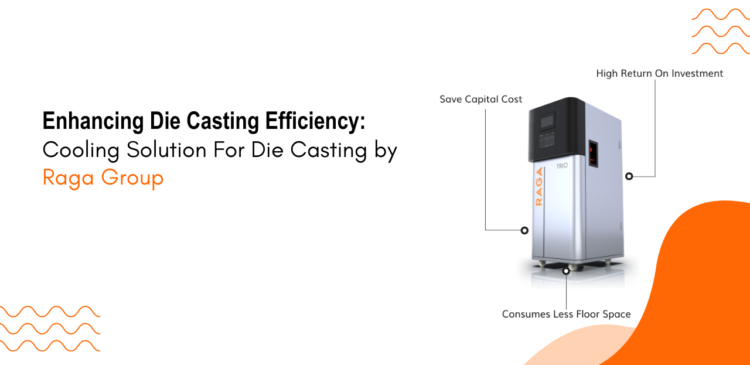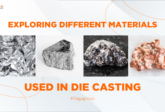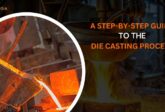Enhancing Die Casting Efficiency: Cooling Solution For Die Casting by Raga Group

What is Die Casting?
cooling solution for die casting – In die casting, a molten metal is injected or poured into precision-made steel molds also known as dies or tools. The dies especially are for specific projects and therefore involve accuracy and repeatability in the making. Aluminum, zinc, and magnesium are some metals commonly used in die-casting.
Advantages of Die Casting
Die casting boasts many advantages over other manufacturing technologies and is oftentimes identified with huge cost savings – not only in the part itself but also in production costs. The process allows for the casting of shapes that are intricately designed with detailed external threads as well as complex structures within minimum additional finishing operations. The die-cast can eradicate the necessity of assembling several components in one piece, cut down on labor costs, and decrease the complexity in inventory, thus enhancing product uniformity, altogether.
Some key Advantages are:
- Allow for design flexibility through variable wall sectioning
- Higher accuracy with tighter tolerances
- Fewer stages from raw material to final production
- Shorter production cycles
- Less waste because material scrap is reduced
- Longer tool life, especially with zinc and magnesium.
Cooling Solution For Die Casting
Cooling for die casting is a key parameter, as it affects both quality and efficiency. Once molten metal is injected into a die, proper cooling ensures uniformity in the solidification process to minimize warping or porosity flaws.
Effective cooling methods include water or air circulation, heat sinks, and conformal cooling channels, which control die temperature and acceleration of the cycles. Improved quality for the product is thus accompanied by improvement in die life as well as overall productivity.
Why Cooling is Indispensable in Die Casting
Cooling occurs with the primary purpose of regulating the solidification of the molten metal in the die-casting process. Proper cooling ensures that the molten metal cools up uniformly to prevent warping, porosity, and cracks as defects. Otherwise, castings develop inequalities and low dimensional accuracy without proper cooling.
It controls the temperature of the die ensures proper solidification and minimizes thermal stress in the mold. It includes water or air cooling channels or systems that maintain a uniform temperature of the mold during the process.
Effects of Proper Cooling
- Better Quality of Product: Uniform cooling minimizes defects and enhances structure and surface quality.
- Higher Production Rate: Proper cooling reduces cycle times, ensuring higher production rates without compromising quality.
- Extended Die Life: Cooling, that manages the heat levels, reduces the die stress and hence helps increase the tool life while reducing the maintenance costs.
Common Cooling Problems in die-casting
Cooling is the last step of die casting, but it has its problems, which can affect product quality and mold life. Some of the most common of these problems are:
- Shrinkage Porosity:
As the molten metal cools down and solidifies, it shrinks. This could result in shrinkage porosity if cooling is not uniform or controlled. This results in small cavities or internal voids that can weaken the structural integrity of the product, thereby making low-quality parts that could eventually fail when under stress.
- Thermal Stresses:
This may lead to uneven cooling, and therefore, thermal stresses in the die and the cast part. The inhomogeneous contractions at various parts may lead to warping, cracking, and even premature failure of the mold. To avoid such cooling, therefore, uniform cooling across the mold is maintained. If the cooling is poor, then it will create excessive heating in the mold. As a consequence, it causes rapid acceleration in wearing down. Gradually, it contributes to distortion in the mold, low dimensional accuracy, and more maintenance or replacement. Proper cooling maintains the performance for many cycles as well as increases the lifespan of a mold.
- Effect on the Final Product from the Improper Cooling:
The final product will suffer from various defects due to improper cooling management such as warped parts, cracks, poor surface finish, and internal voids. All these problems usually lead to decreased mechanical properties and appearance of the cast part, thus requiring rework or rejection, therefore impacting production time and cost. Inconsistent cooling can also increase cycle times, again reducing overall efficiency.
Benefits of Raga Group Cooling Solution For Die Casting
Raga Group cooling technologies have plenty of advantages associated with them that ensure the optimum quality of the final product and die casting process in terms of efficiency and duration.
- Optimum Quality of Product with Reduced Defects:
The systems developed by Raga guarantee uniform and accurate cooling of any mold following casting, thus reducing the most popular defects such as porosity through shrinkage and thermal stress. Therefore, the cast part is always stronger and more durable for surface finishes and meets even the highest requirements of a given industry.
- Longer Life of the Mold and Reduced Costs in Maintenance:
Raga’s cooling solutions reduce the thermal load on molds, which results in longer useful life and lower maintenance frequency. This means less production disruption and lower maintenance costs over time.
- Better Production Efficiency And Cycle Times:
For instance, the RAGA HVCU and VACMAX12 are cooling technologies that seek to speed up cooling time without affecting its quality. The faster the cooling time, the quicker the cycle time, thus greater throughput, and it will improve the whole production efficiency so that the manufacturer delivers goods to the market on time and reduces operational costs.
Conclusion
Effective cooling is an important step in die casting, having major roles in delivering high-quality products with high percentages of defect-free products, reduced manufacturing defects, and optimized production efficiency. Advanced cooling solutions could minimize challenges in the occurrence of shrinkage porosity, thermal stresses, and excessive mold wear, hence possessing longer mold life and faster cycle times.
Raga Group’s advanced cooling technologies offer not just solutions to overcome these obstacles but also advanced technological approaches to improve the entire die-casting process. Not only do these advanced solutions facilitate improvement in the quality of products, but they also ensure efficient production and also help cut down maintenance costs.
Learn more about Raga Group’s cooling solutions today. Unlock the full potential of your die-casting operations and get at the top of the industry with its products.
Frequently Asked Questions (FAQs)
- Why is cooling important in the die casting process?
- Cooling is crucial in die casting because it helps solidify the molten metal quickly and uniformly, reducing defects like shrinkage porosity and thermal stresses. Effective cooling also enhances the overall quality and durability of the cast parts.
- What are the common challenges faced in cooling during die casting?
- Some common challenges include managing thermal stresses, preventing shrinkage porosity, and maintaining the mold’s integrity. Improper cooling can lead to defects in the final product and increased maintenance costs.
- How do Raga Group’s cooling solutions improve die casting processes?
- Raga Group’s cooling solution for die casting, such as the RAGA HVCU and RAGA VACMAX, are designed to optimize the cooling process. They help in reducing defects, extending mold life, and improving production efficiency by ensuring uniform and rapid cooling.
- What benefits can I expect from using Raga Group’s cooling technologies?
- By using Raga Group’s cooling technologies, you can expect enhanced product quality, reduced defects, longer mold life, lower maintenance costs, and improved production efficiency and cycle times.
- How can I integrate Raga Group’s cooling solutions into my existing die casting setup?
- Integrating Raga Group’s cooling solutions is straightforward. You can follow a step-by-step guide provided by Raga Group, which includes tips for optimizing your cooling processes. Additionally, Raga Group offers support and consultation to ensure seamless integration.




